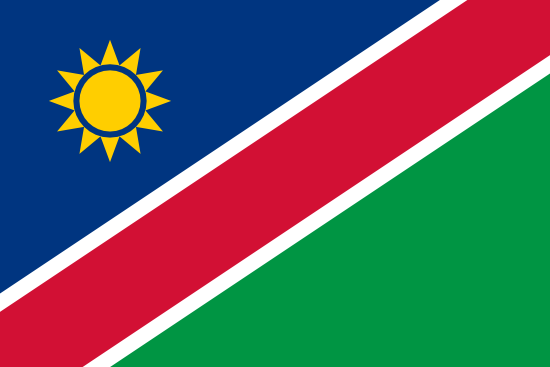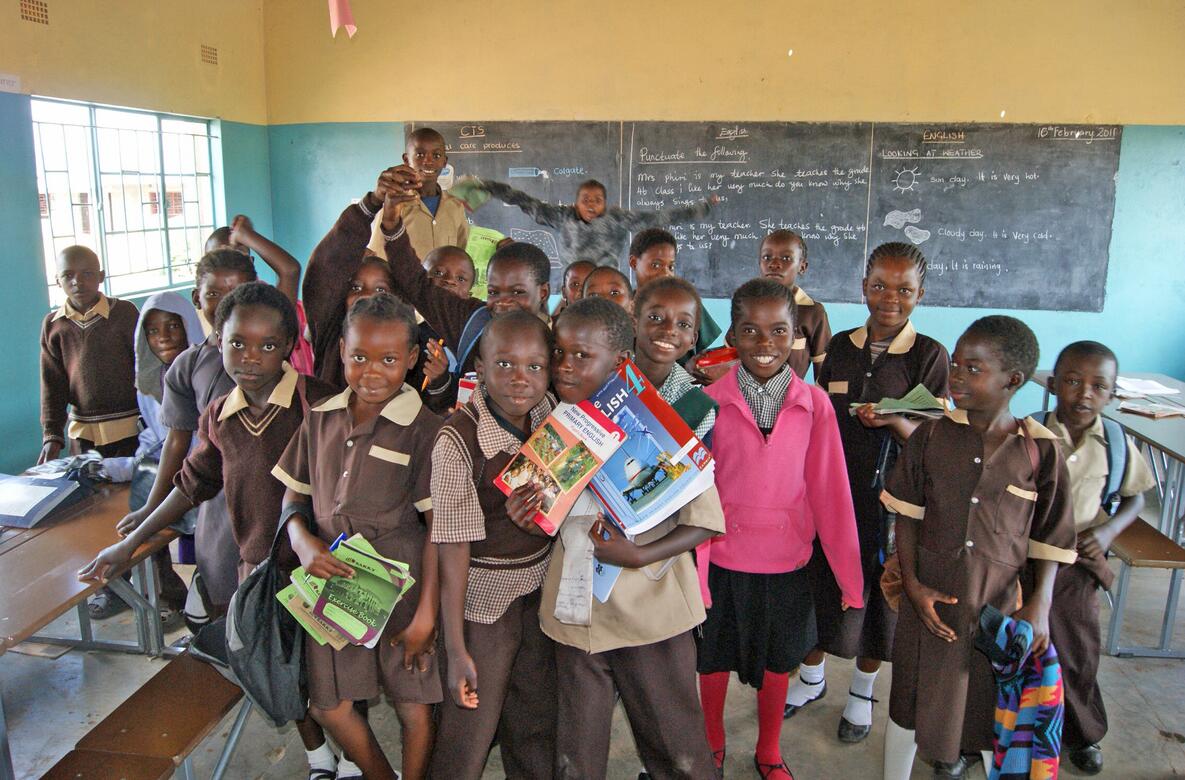Namibia Overview
Namibia is located in southwestern Africa on the Atlantic Ocean. The country borders Angola, Botswana, South Africa and Zambia. Along the coast are the Namib Desert and to the east the Kalahari Desert. From about the year 1000 BC, there are rock carvings in Twyfelfontein. The area is declared a World Heritage Site.
| Capital: | Windhoek |
| Biggest city: | Windhoek |
| State: | republic |
| Language: | English |
| Religion: | Christianity |
| Surface: | 825 418 km² |
| Population: | 2.4 million (2013) |
| Population density: | 3 residents per km² |
| Life expectancy: | 51 years |
| Illiteracy: | 15% |
| Currency: | Namibian dollar (NAD) 1 dollar = 0.59 kr |
| GDP per capita: | $ 5,700 (2010) |
| Time difference: | +0 hours |
| Electricity: | 220/240 V AC, 50 Hz |
| National Day: | 21 March |
| Country area code: | 264 |
| 2-Letter country abbreviation: | NA (See more abbreviations on Abbreviationfinder) |
| Business: | agriculture 60%, industry and trade 19%, service sector 8%, administration 7%, mining 6% |
| Climate: | in mainly desert climates with higher precipitation inland |

German Southwest Africa was between 1884 and 1920 a German colony whose area corresponds to today’s Namibia. At the Peace of Versailles in 1919, it was decided that Germany would be immediately deprived of all its colonies, and when the peace treaty came into force in 1920, the area was placed under South African administration, and was named South West Africa.
In 1966, the SWAPO guerrillas started a war of independence for the area, which then began to be called Namibia, but South Africa did not recognize independence until 1988. By then, the UN had drawn up a peace plan for the entire region. Namibia formally became independent in 1990, followed by democratic elections.
About half of the population lives on agriculture, especially small farms. Agriculture accounts for about 10 percent of the country’s GDP, together with binary industries 25 percent, industry for 20 percent and services for 33 percent. In addition, fishing and tourism are also becoming increasingly important. The manufacturing industry, on the other hand, is weakly developed.
Although Namibia is one of Africa’s richer countries, there is widespread poverty due to high unemployment and large income disparities.
One of the biggest health problems is AIDS. In 2001, almost 23 percent of the adult population was infected.
WORLD HERITAGE
The following objects in Namibia are listed on the UNESCO World Heritage List.
The year in which the item was added to the list is indicated in parentheses.
- Rock carvings in Twyfelfontein (2007)
- Namib Desert, with spectacular dunes shaped by wind and water (2013)
ELECTRICAL OUTLET
Electricity and electrical outlets in Namibia
Voltage: 220 V
Frequency: 50 Hz
Type of plug: M
Need an adapter: Yes, Swedes need an adapter.
CLIMATE AND WEATHER
Weather in Windhoek
| Climate | Jan | Feb | Mar | Apr | May | Jun | Christmas | Aug | Sep | Oct | Nov | Dec |
| Average temperature °C | 24 | 23 | 21 | 20 | 17 | 15 | 14 | 17 | 20 | 22 | 23 | 24 |
| Day °C | 31 | 29 | 27 | 26 | 23 | 22 | 22 | 25 | 27 | 29 | 30 | 31 |
| Night °C | 17 | 17 | 15 | 13 | 10 | 7 | 6 | 9 | 12 | 14 | 16 | 17 |
| Rain (mm) | 70 | 110 | 50 | 30 | 10 | 10 | 10 | 10 | 10 | 10 | 30 | 40 |
| Rainy days | 11 | 10 | 9 | 5 | 1 | 0 | 0 | 1 | 1 | 4 | 5 | 6 |
| Soltim / day | 5 | 5 | 5 | 7 | 9 | 9 | 9 | 11 | 12 | 11 | 9 | 5 |

Swakopmund
Swakopmund is a city and seaside resort in Namibia with 25,000 residents (2005). Historically, the city gained importance as the main port for the German colonial administration in the then German South West Africa, as well as as the main port for German emigrants to Namibia.
Windhoek
According to Countryaah, Windhoek is the capital of Namibia, and has 233,529 residents (2001). It is located on a plateau in the central parts of the country, and is Namibia’s commercial center. In addition to trade and light industry, the city’s business life is dominated by public activities.


